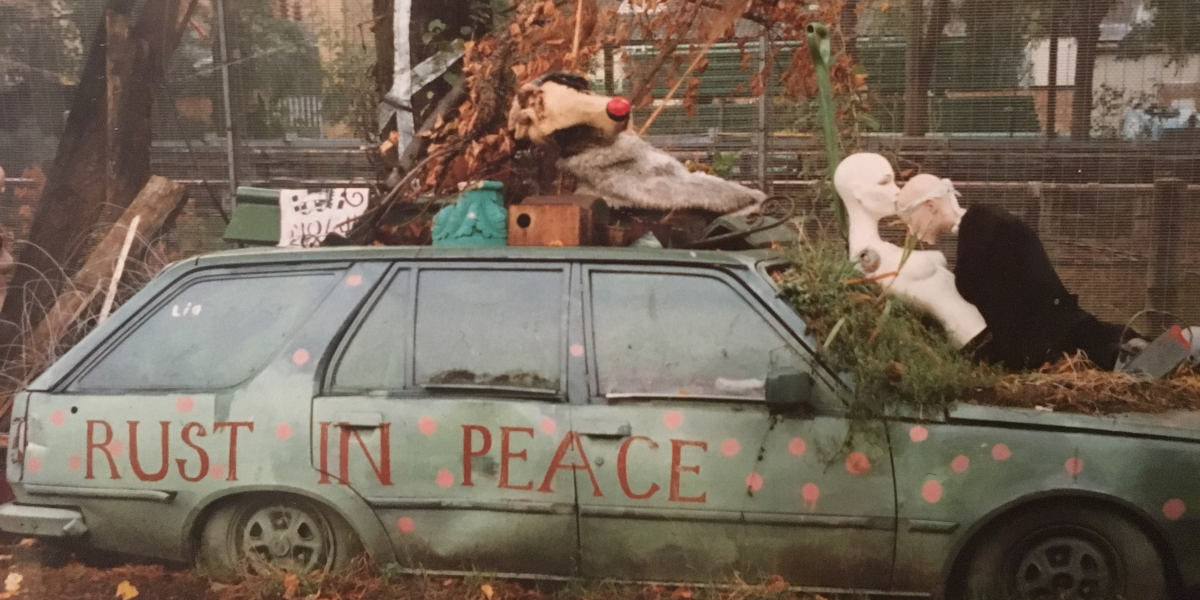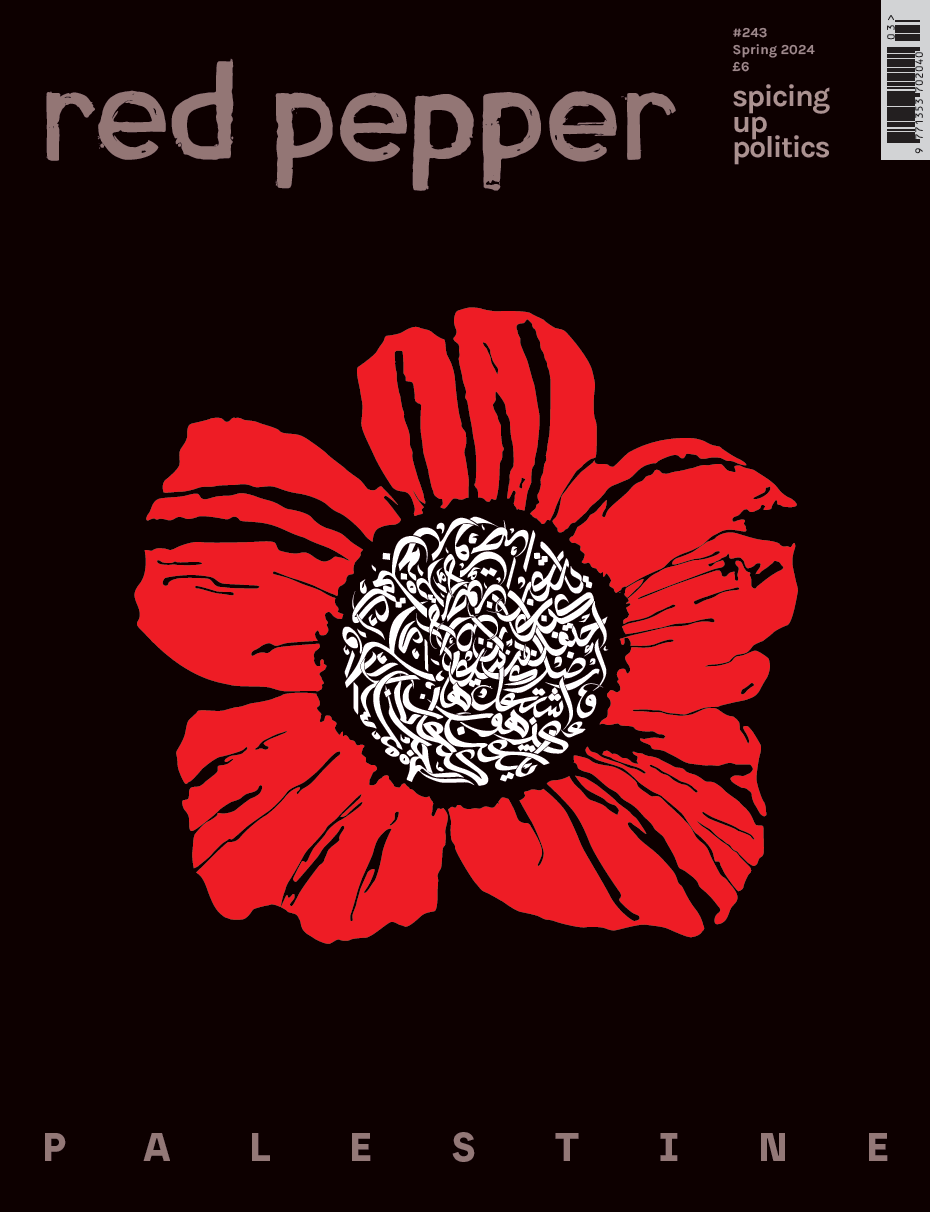On a Saturday afternoon in 1995, I went with a friend to Devonshire Green in Sheffield. We’d heard something about a protest against cars. More importantly, we’d heard about a party. Fully fledged ravers, we were always where the beats were at. I’d never been on a demo, and certainly never a direct action. So as we gathered by the ring road, nobody was more surprised than me as, when someone shouted ‘run!’, I rushed onto the dual carriageway along with the crowd.
A sound system appeared from nowhere and we all started dancing. Banners came out, along with chalks and sandpits for the kids. A couple of teenagers took some of those chalks and wrote ‘fuck the police’ on the road, which caused some trouble. But otherwise there was a peaceful festival atmosphere. I was aware that somewhere motorists were probably getting angry (furiously expressed in the local press in the following days), but for that moment we were living in a car-free utopia. It was one of the most exhilarating experiences of my life.
Reclaim the Streets was born in the spring of 1995, in an abandoned squatted church in Camden. It grew out of the M11 link road protest, which saw a mass occupation on Claremont Road in Leytonstone, East London. Although this campaign was ultimately unsuccessful – the residential street was demolished and the road building went ahead – it brought a wide range of people together. Environmental campaigners, local activists, and ravers like me.
Recently, I spoke to Ziggy Melamed, who’d joined Reclaim the Streets in London, about her own experiences. Reflecting the broad appeal of the movement, we came from vastly different backgrounds: Ziggy was a seasoned activist, whereas I’d not much experience of politics. I’d been drawn in after the 1994 Criminal Justice Act legislated against my youth culture with its infamous criminalising of gatherings characterised by the ‘emission of a succession of repetitive beats’. Despite these differences, Ziggy’s experience of Reclaim the Streets was remarkably similar to my own.
Liberating anarchy
On a warm summer day in July 1995, Ziggy started her morning at the Socialist Workers Party (SWP) annual conference. ‘It was blah, blah… men talking about stuff,’ she explained. At midday, she left for a Reclaim the Streets protest she’d heard about.
‘We took over all six lanes of the flyover motorway in Shepherd’s Bush. It’s very scary when you first go on to the road, because the traffic is still moving. But it was just so brilliantly organised from the DIY culture. There were sound systems, and these figures in huge ballgowns on stilts. It looked like a carnival costume, but underneath they had these pneumatic drills, and were drilling up the tarmac. It was theatrical, and a sense of the absurd […] and a great sense of togetherness and power to really change things. In contrast to the hierarchical organisations [like the SWP] it felt so free and liberating. It was joy itself.’
Although the movement grew out of London, the original organisers encouraged people to stage street raves independently of the original collective. They provided a 10-step guide, encouraging people to use the Reclaim the Streets name. In this age of brand awareness that in itself seems radical, but Reclaim the Streets was always an idea, not an organisation.
Within months the movement spread across the country. At each party, activists outwitted the police, bringing sound systems, sandpits, paddling pools, fire-eaters, drag artists, breakdancers and even a football match. At one London event, protestors climbed lampposts, unfurling brightly coloured banners that read: cars my arse.
While demonstrations were mostly peaceful and joyful, the police response could be heavy-handed. In September 1996, around 200 police officers broke up a Reclaim the Streets party in Cambridge, charging the crowd with batons and riot shields. Thirty-six people were arrested, drawing criticism from local Lib Dems and Labour councillors, who described the police as ‘over the top’.
‘Truly ungovernable’
Reclaim the Streets put solidarity at the heart of the movement. It forged links with Liverpool dockers and London Underground workers. In Brixton they worked with local groups fighting racism and police harassment.
The movement reached its peak in June 1999 with the Carnival Against Capitalism. The event coincided with the 25th G8 summit in Cologne, which brought together the eight largest high income countries. It was part of a global day of action focused on financial districts in 40 countries around the world.
In the UK, groups such as Campaign Against the Arms Trade, Zapatista Army of National Liberation, and The Association of Autonomous Astronauts came together, and thousands of protestors descended on the City of London. There were die-ins, a critical mass bike ride, and a drum and bass party in the Stock Exchange. Ziggy recalls: ‘There was a sense of great triumph and great power about it. My friend wrote later that it was the one time she felt truly ungovernable. Which is why it was so surprising to find out later that the cops were involved in the planning.’
In 2010, the Guardian exposed police infiltration into grassroots political groups going back decades. Officers adopted fake personas, sometimes entering intimate relationships with female members of the targeted groups. ‘A lot of my friends had [unknowingly] slept with policemen,’ Ziggy said. ‘It’s really, really heartbreaking. Having these [court transcripts] in front of us and going through it has been really painful for some of us.’
Globally, police responses to protests were also becoming more brutal. At the so-called Battle of Seattle in November 1999, they used stun grenades, rubber bullets and pepper spray to disperse crowds. Meanwhile in the House of Commons, Home Secretary Jack Straw condemned the ‘deplorable outbreak of public disorder and violence’. In echoes of recent government action against Palestine Action, there were rumours that politicians were trying to make Reclaim the Streets a proscribed organisation. And Kneecap aren’t the only political performance artists to be accused of terrorism. In 2002, the FBI listed Reclaim the Streets and other groups as ‘a potential threat in the United States’.
Legacy
Police and state tactics made organising harder, but by the early 2000s times had also changed. Activists had grown up and wanted more stability in life, some were burnt out, or had simply moved on to other things, such as Guerilla Gardening and Critical Mass. Ziggy bought a van and travelled around Europe, before joining the People’s Global Action Network and settling on a commune in Northern Spain.
While Reclaim the Streets had big ambitions around climate justice and capitalist resistance, Ziggy felt it didn’t really work out like that. Unlike the squatting movements of the 1970s and 80s, which were fuelled by the basic housing needs of single mums, LGBTQ people, and the black community, Reclaim the Streets was mostly young, white activists who could afford to take risks.
‘It was good to feel the power and have all that media coverage,’ Ziggy said. ‘But [the movement] alienated people as well. Once you have kids you realise none of that would be open to single mums; it wouldn’t have included people with disabilities; it was pretty much for cool young people.’
‘There was a sense of great triumph and great power about it. My friend wrote later that it was the one time she felt truly ungovernable’
Those young people, growing up in the late 1980s and 90s, saw the fall of the Berlin Wall and the end of apartheid. Ziggy remembers watching these huge political events and feeling like their generation really could change the world, including bringing down capitalism. They didn’t, of course, but Reclaim the Streets still moved the dial.
Ziggy notes that the movement was important and impactful. In the early 90s, the Conservative government had planned to build 600 roads. By the time they left office in 1997, only 150 were built. When Labour came into power that year, they scrapped the remainder of the road building programme and committed to an integrated transport system.
Although Reclaim the Streets is gone, it’s not forgotten. In 2011, the Occupy movement drew on many of their tactics, creating street camps in financial districts around the world. The chanting of ‘oh Jeremy Corbyn’ at nightclubs around the country from 2017 onwards arguably embodied the spirit of Reclaim the Streets too. Palestine solidarity actions also carry that torch.
It’s easy for older generations to look on and sneer at the idealism of the young, but youth movements are important because of their big ideas. They push society forward, challenging our preconceptions and providing hope for a better future. When faced with massive issues like global economic injustice, climate catastrophe and genocide, that youthful optimism can be just what we need. As the popular slogan adopted by Reclaim the Streets reminds us: ‘If we can’t dance, it’s not our revolution’.










